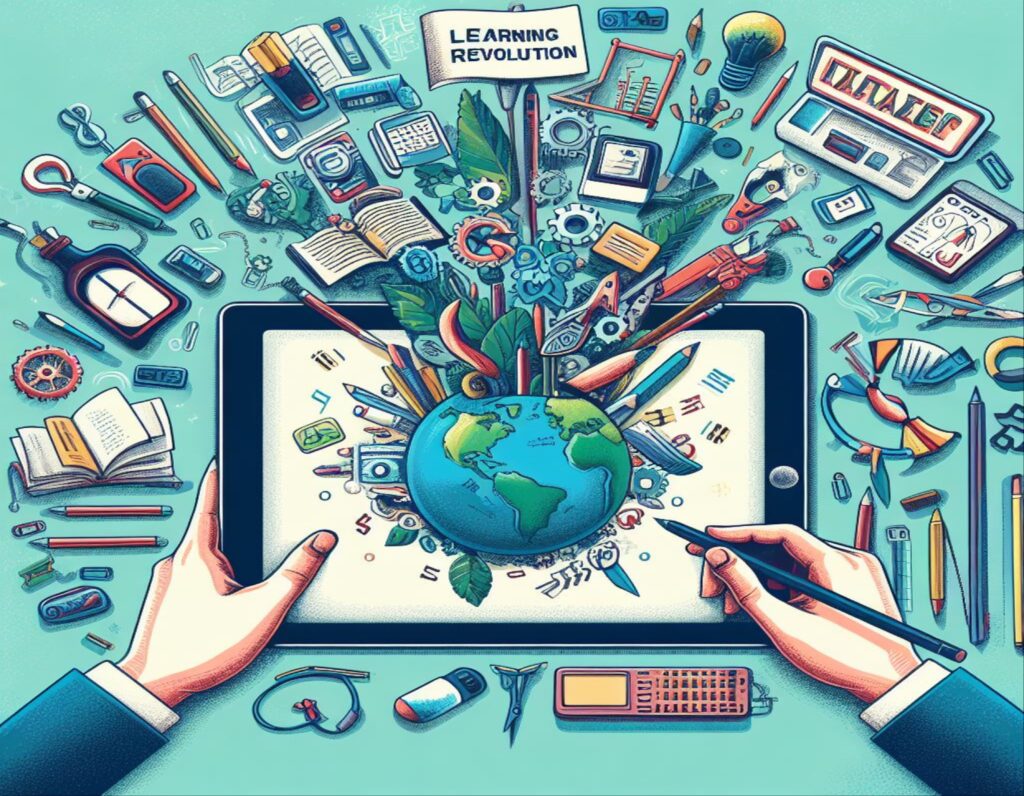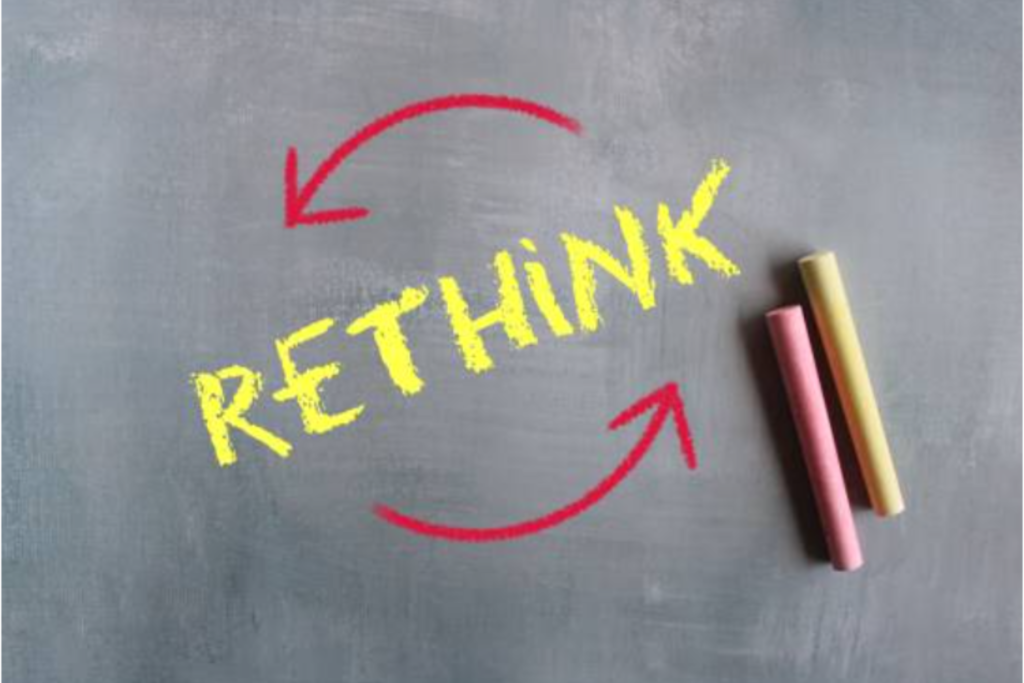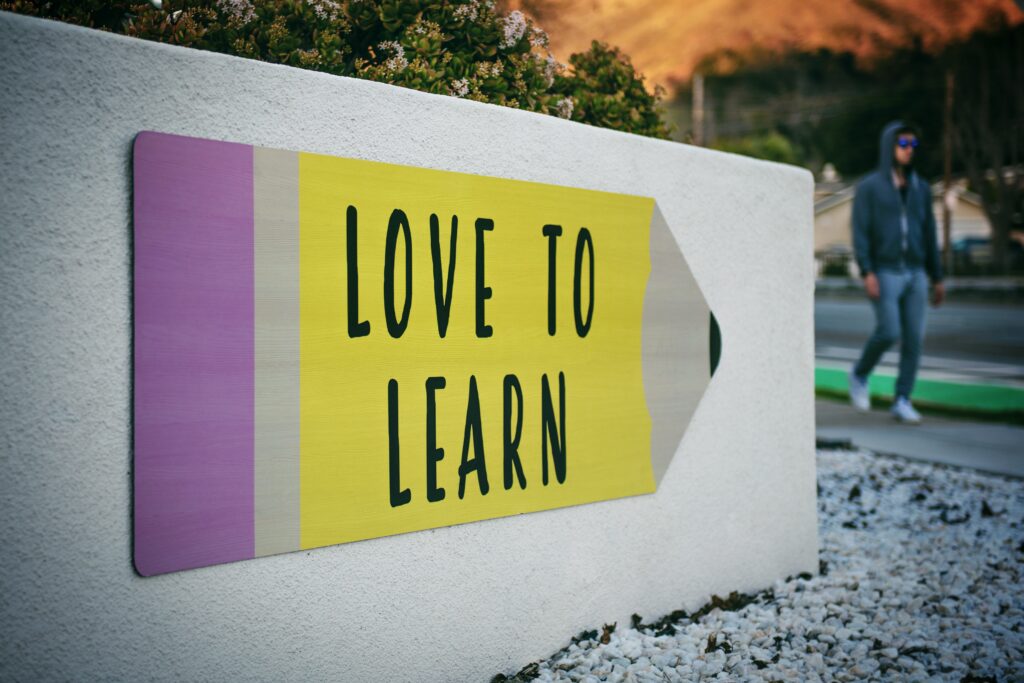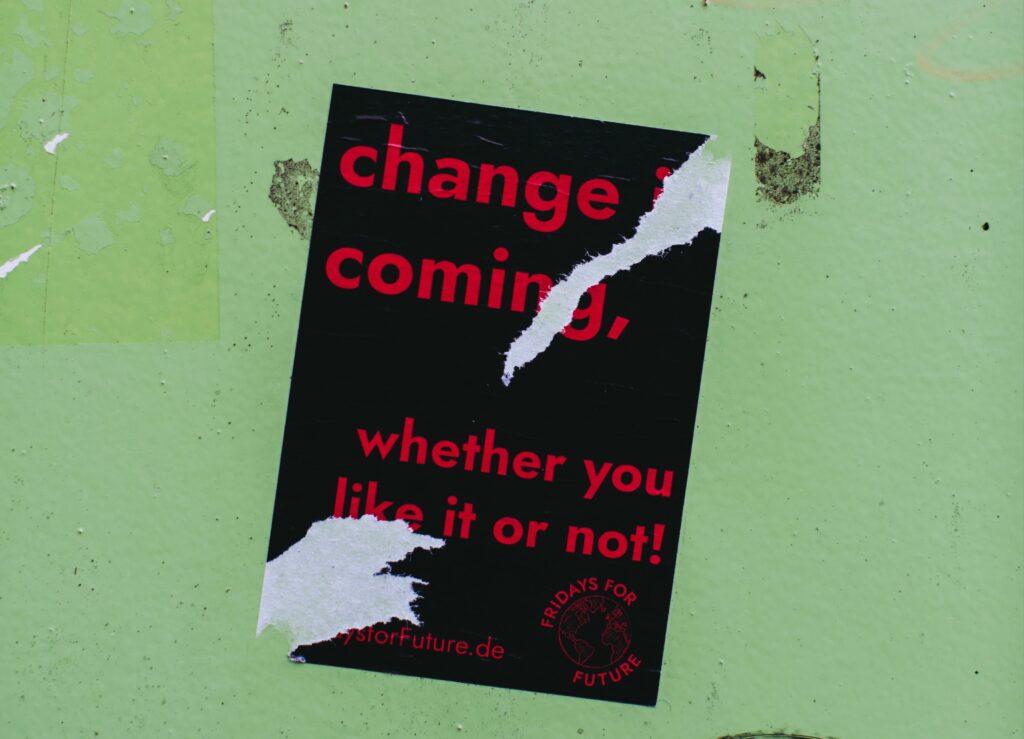When I began the ADL program, I was in the early stages of my second year as a teacher, with everything in the field being quite new to me. This year has been an amazing and memorable journey, during which I learned and implemented numerous concepts at the same time. The ADL program has offered me deep insights into learning processes and how to effectively facilitate learning for others.
Creating and Reflecting on the “Interactive Learning Pods” Innovation Plan
One of the most significant accomplishments during this journey was the creation of my Innovation Plan, “Interactive Learning Pods: A Dynamic Blended Learning Solution“. This plan utilizes the Station Rotation Blended Learning Model to create a student-centered approach that accommodates varied preferences and needs. This initiative has the potential to transform traditional teaching methods by fostering personalized learning journeys and shifting the teacher’s role to that of a facilitator and mentor.
Creating my Innovation Plan prompted me to reflect on why I was pursuing this initiative. It made me realize the importance of clarifying my purpose—why do I want to implement this innovation plan? What is my underlying belief and what is my ultimate goal?. People don’t buy what you do, they buy why you do it (Sinek, 2009). This reflection has been essential in grounding my innovation efforts with a clear sense of purpose and direction.
A cornerstone step during the creation of my Innovation Plan was to develop a Literature Review. A literature review is crucial because it provides a comprehensive summary and critical evaluation of existing research and scholarly articles relevant to the topic of interest. It serves several important purposes: contextualizing the innovation within existing knowledge, identifying gaps in current research that the plan can address, validating the need and relevance of the proposed innovation, informing its design and implementation with evidence-based insights, and enhancing the credibility of the plan by basing decisions in established literature.
The creation of a Growth Mindset Plan was a very important step toward the success of my Innovation Plan. By fostering a growth mindset in both myself and my students, I am laying the foundation for a positive and resilient learning environment. This mindset encourages students to embrace challenges, learn from feedback, and persist in the face of setbacks. Incorporating a growth mindset into the Interactive Learning Pods initiative ensures that students remain motivated and engaged, as they view learning as a continuous journey rather than a fixed outcome. This approach not only enhances their academic performance but also equips them with essential life skills such as perseverance, adaptability, and a love for learning, all of which are integral to the overall success of the Innovation Plan.
Another key skill I developed during the creation of my Innovation Plan was my approach to leading change. My perspective has shifted from apprehension to enthusiasm. Now, I view myself as a change agent, armed with the knowledge and confidence to effect positive change.
Where Am I in My Innovation Project? What Worked and What Could Be Improved
As I reflect on my innovation project, I am currently in the piloting phase of the “Interactive Learning Pods” initiative. The next steps involve gathering feedback, assessing its effectiveness, and making any necessary adjustments. My goal is to complete this pilot during the upcoming school year.
The learning process has been transformative. One of the standout successes was the integration of personalized learning plans, which allowed for targeted instruction based on individual student needs and strengths. Additionally, fostering a culture of student collaboration within the small learning groups proved highly effective in enhancing student engagement and promoting peer learning. These collaborative settings not only encouraged active participation but also nurtured a supportive learning environment where students felt comfortable sharing ideas and working together towards common goals. However, reflecting on the experience, I recognize the need to refine the initial assessment phase to more accurately tailor learning plans right from the beginning. This adjustment aims to ensure that each student receives personalized support and challenges that are precisely aligned with their learning journey, further optimizing the effectiveness of the educational experience.
Lessons Learned
The experiences of trying out new teaching methods taught me a lot about the importance of having a growth mindset, especially when receiving feedback. A growth mindset means seeing feedback and challenges as chances to learn and get better, rather than feeling discouraged. When I got feedback from students and colleagues, I learned to see it as helpful advice that could improve my teaching. This mindset helped me stay open to making changes and trying new things based on what I learned. It’s not just about making my teaching better but also showing my students that it’s okay to learn from mistakes and keep improving. I continuously encourage my students not to feel discouraged but to see mistakes as opportunities to learn. I lead by example because I understand that a real leader inspires others to improve. I love hearing conversations among my students in the classroom where they encourage each other to learn from their mistakes. I notice how this boosts their confidence and increases their eagerness to learn.
One of the most important highlights of this journey has been the creation of my ePortfolio. I have invested significant time in ensuring it looks professional and contains relevant information that can benefit not only myself but others as well. My goal is for the ePortfolio to serve as a valuable resource for teachers looking to enhance their teaching and learning techniques. I aim to maintain this ePortfolio as a dynamic, evolving document that I can utilize not only as a resource for my colleagues and teammates but also as a reflection of my growth and progress throughout the various phases of my implementation plan. The ability to revisit and review my work will help me stay focused on my goals and provide a blueprint for future innovation projects I may develop.
How I Plan to Promote and Communicate My Innovation Project
To make sure everyone knows about my innovation project, I have a plan to share it widely. First, I’ll use my ePortfolio to create a kind of online showcase. This will be a place where I can explain in detail what my project is all about—how it works, what we’ve achieved, and why it’s important for our students. It’s like a digital hub where anyone interested can see the whole journey of our project. Next, I’ll bring my findings to school meetings. This is where I can talk directly to my fellow teachers and school leaders. I’ll share the successes we’ve had and also discuss any challenges we’ve faced. Getting their feedback and support is crucial because it helps us improve and refine the project as we move forward. Lastly, I plan to host professional development sessions. These are like workshops where I’ll teach other teachers about the methods and ideas we’ve used in our project. I want to share practical tips and strategies that they can try out in their own classrooms. It’s all about spreading the knowledge and inspiring others to innovate in their teaching too.
Knowing what I know now, what key things would I do differently?
Looking back on what I’ve learned, I see the importance of starting off with a stronger initial assessment phase. This means really digging deep at the beginning to understand exactly what students need and how best to support them. By doing this, I can tailor the project more effectively from the start and ensure it meets everyone’s expectations. I’ve also realized the value of involving stakeholders—like other teachers, parents, and school leaders—right from the beginning. Getting their input and support early on not only helps refine the project but also builds broader understanding and buy-in. When everyone is on board and sees the potential benefits, it makes implementing the project smoother and more effective. So, looking ahead, I would focus on these areas to strengthen future projects: thorough initial assessments to set a solid foundation, and early engagement with stakeholders to build a strong network of support and collaboration. This approach will help ensure that future innovations have the best chance of success and meaningful impact on our students and school community.
In summary, this last year has been a period of significant growth and learning for me. My learning manifesto has guided me through the complexities of education, and I am excited to continue this journey of adapting, innovating, and learning. Through the ADL program, I have gained the knowledge and confidence to be an agent of change in my organization, equipped with the tools to implement and promote innovative teaching practices effectively.
References
Bailey, J., Martin, N., Schneider, C., Vander Ark, T., Duty, L., Ellis, S., & Terman, A. (2013). Blended learning implementation guide 2.0. Digital Shift, 2.
Christensen, C.M., Horn, M.B., & Johnson, C. W. (2016). Disrupting class: How disruptive innovation will change the way the world learns (2nd ed.). McGraw Hill.
Dweck, C. (2016). Mindset: The new psychology of success. Ballantine Books.
Harapnuik, D., Thibodeaux, T., & Cummings, C. (2018). Choice, Ownership, and Voice through Authentic Learning. Creative Commons License.
Horn, M. B., Staker, H., & Christensen, C. M. (2015). Blended: using disruptive innovation to improve schools. Jossey-Bass.
Pink, D. H. (2009). Drive: The surprising truth about what motivates us. Riverhead Books.
Sinek, S. (2009). Start with why: How great leaders inspire everyone to take action. Retrieved from https://www.youtube.com/watch?v=u4ZoJKF_VuA.






